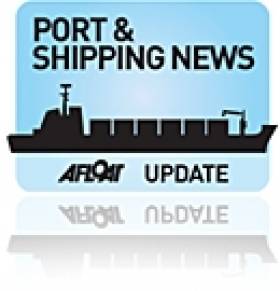Displaying items by tag: Container Markets
IMDO Shipping Review: Global ‘Box’ Growth, Panama Canal Record Quarter, Container Merger Closer and much more
#Ports&Shipping –The latest IMDO Weekly Shipping Market Review includes the following stories as detailed below.
Container Market: Global container throughput accelerates - Global container throughput growth accelerated in December according to the Flash Container. Throughput Index of the Rheinisch-Westfälisches Institut für Wirtschaftsforschung (RWI) and the Institute of Shipping Economics and Logistics (ISL).The index improved significantly in December from a revised 117.9 to 119.9, its highest reading since
publication began two years ago.
Infrastructure: Record quarter for Panama Canal as dispute lessens - The Panama Canal has registered record throughput tonnage for the first quarter of the fiscal year, some 4.8% higher than forecast. The Canal handled 87.7m Panama Canal Universal Measurement System tons in the first quarter, between October and December, registering 3,450 vessel transits.
Container Market:Hapag-Lloyd and CSAV push on with merger proposal - The proposed merger of two container lines to form the world's fourth largest line took another step forward last week according to Trade Winds as a memorandum of understanding (MOU) was agreed upon by Hapag-Lloyd and CSAV.
For more on each of the above and other stories click the downloadable PDF IMDO Weekly Markets Review (Week 4). In addition to coverage on Afloat.ie's dedicated Ports & Shipping News section.
IMDO Shipping Review: Irish Firms Reach Record Exports, Service Charges for Blanking Sailings and Chinese Demands to Lift Freight Rates
#Ports&Shipping –The latest IMDO Weekly Shipping Market Review includes the following stories as detailed below.
Irish Economy - Irish firm's exports up: Irish companies supported by Enterprise Ireland have reached record export levels in 2012, breaking the €16 billion mark for the first time. According to figures from Enterprise Ireland and the Department of Jobs, Enterprise and Innovation, there was a 6.6 per cent increase from the previous year, with exports totaling €16.2 billion.
Container Market -Service changes: Shippers should prepare for service changes and the blanking of sailings in the next few weeks as rates continue to decline sharply and carriers are forced to take action, according to SeaIntel chief Lars Jensen. Speaking at Containerisation International's Global Liner Conference, Mr Jensen said that oversupply of capacity had resulted in spot rates on services from Asia to Europe declining by around $60 per teu each week this year.
Dry Bulk Market -China to push rates up: Chinese demand for dry bulk imports, including iron ore and coal, is expected to lift freight rates from July onwards, according to Pareto Securities AS. Nicolai Hansteen, chief economist at Pareto Shipping, who spoke at the Scandinavian Shipping and Ship Finance Conference.
To read more of each of the above stories and other news from the IMDO Shipping Markets Review for Week 16, click HERE to be viewed or downloaded as a PDF

























































